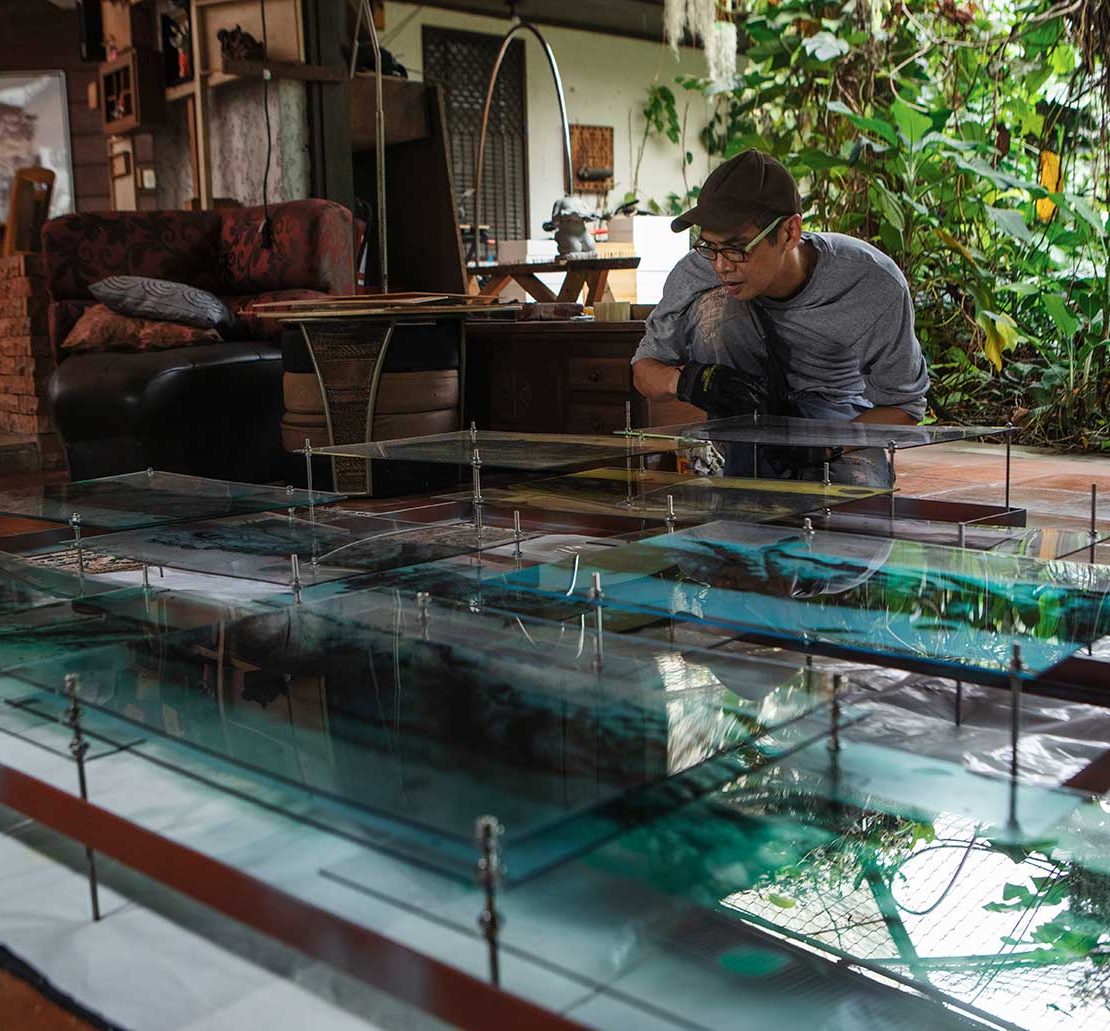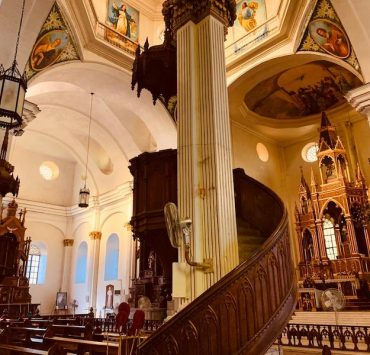The balete tree’s leafless, gnarled branches and stringy vines were the only indication that the unassuming house on a quiet street in an exclusive village in the south held something unusual inside. The place where an artist resides is expected to be filled with art and cluttered with tools, materials and works-in-progress, and Eric Zamuco’s abode is no exception. But the dwelling itself has an interesting provenance of its own—it was built in 1979 by the eldest son of the late National Artist Cesar Legaspi. Dennis Legaspi was a banker and is now a pastor, perhaps someone with architectural and design tendencies, because he built his family a home with many angles, an outdoor pond, a sunken living room and most striking of all, an indoor-outdoor garden filled with lush vines and hanging plants. The effect is that of a sun-dappled forest growing right in one’s veranda.
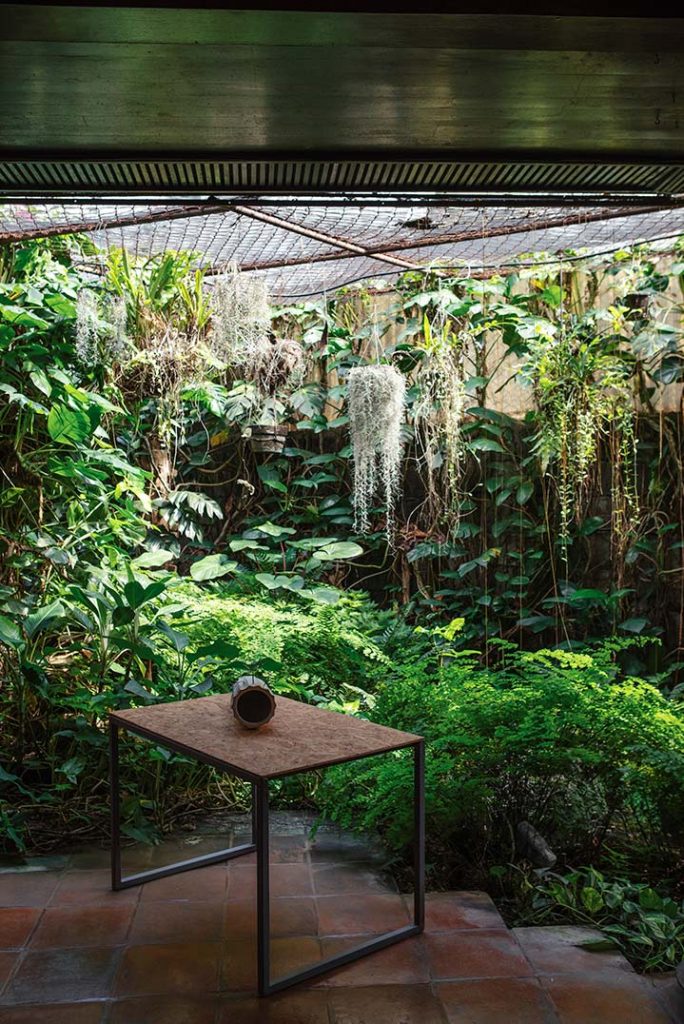
This plant-covered house is where Legaspi’s daughter Janice grew up. Her famous grandfather made the front door for them—a beautiful piece of wood carved with a diamond pattern and adorned with an antique sunburst doorknob in the center of the door, old-European style. Have you ever tried opening a door whose handle is in the middle? It’s quite difficult. But art!
Janice herself became a doctor, but she married an artist and that is how Eric came to be living in the house of Cesar Legaspi’s son and his wife’s childhood home for the last eight years. Prior to this homecoming on many levels, the couple had spent seven years in the United States—Eric getting his MFA and Janice doing a family medicine residency, both at the University of Missouri. They had a son, then they moved to Boston, where Janice completed a fellowship and Eric continued to make art while being a stay-at-home dad.
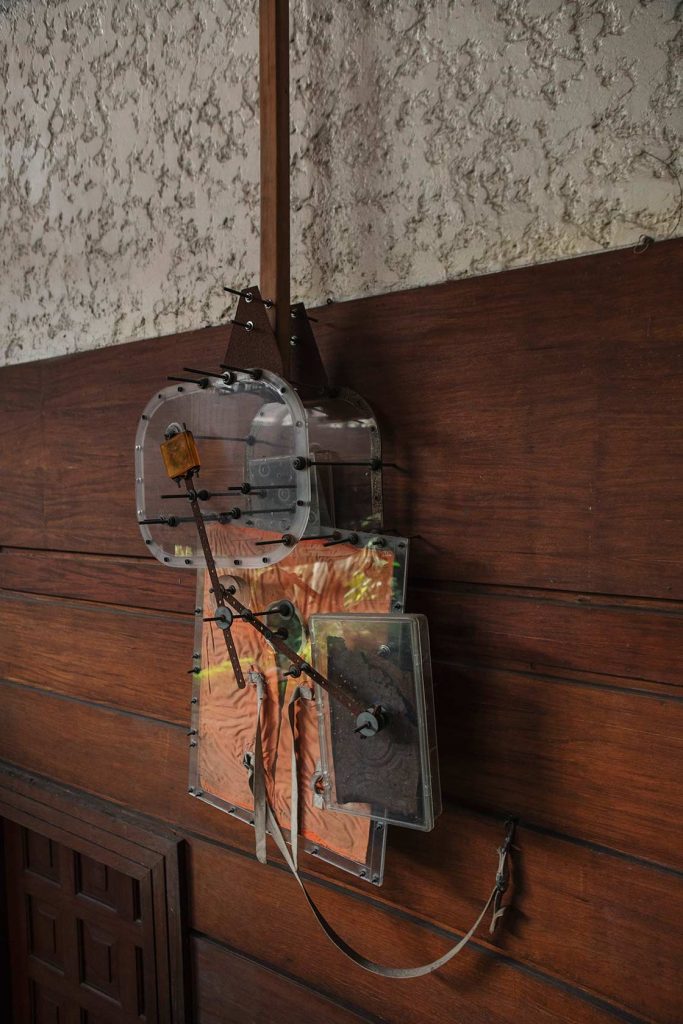
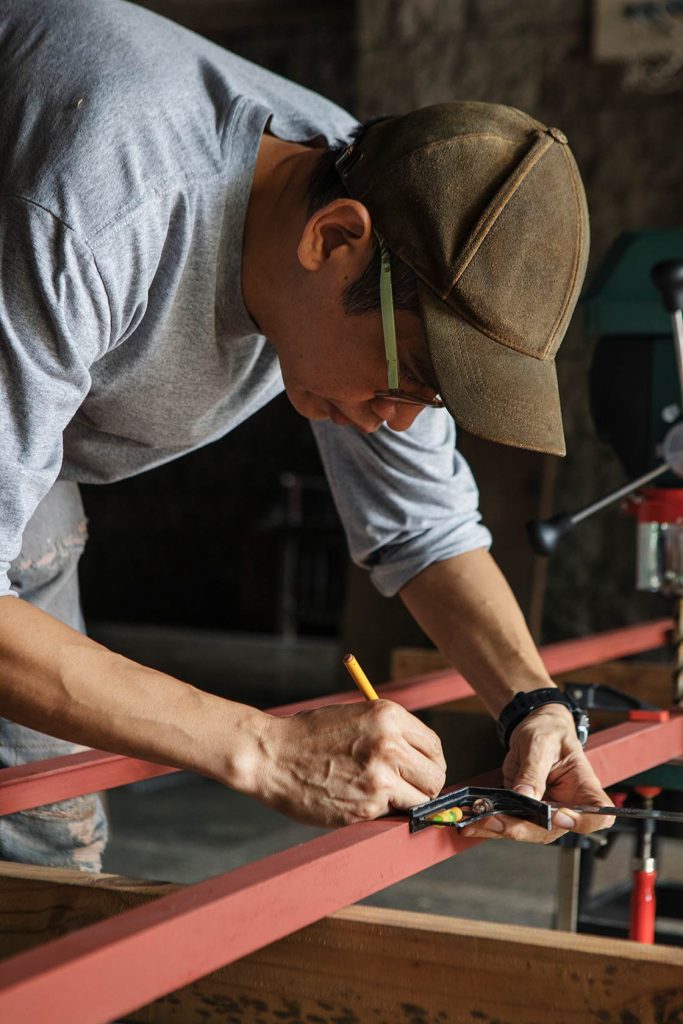
In the US, Eric’s work dealt with themes of dislocation and displacement, always referring back to his roots. In Missouri, he produced a video of himself continuously eating a 15-pack of Goldilocks polvoron while intermittently whistling “My Country, ’Tis of Thee,” the same song an indigenous boy from the Philippines was made to sing at the White House. The boy came from one of the ethnic groups that were taken to be exhibited at the 1904 World’s Fair in St. Louis, Missouri.
Back in the Philippines, Eric also grappled with his experiences living abroad—including racism— through his art. In his 2014 exhibit “Another Other,” a video shows him repeatedly jumping for an hour at a site in Missouri where actual lynchings took place. Condensed to just several minutes, the jerky footage resembles a man’s last gasp as he is hanged.
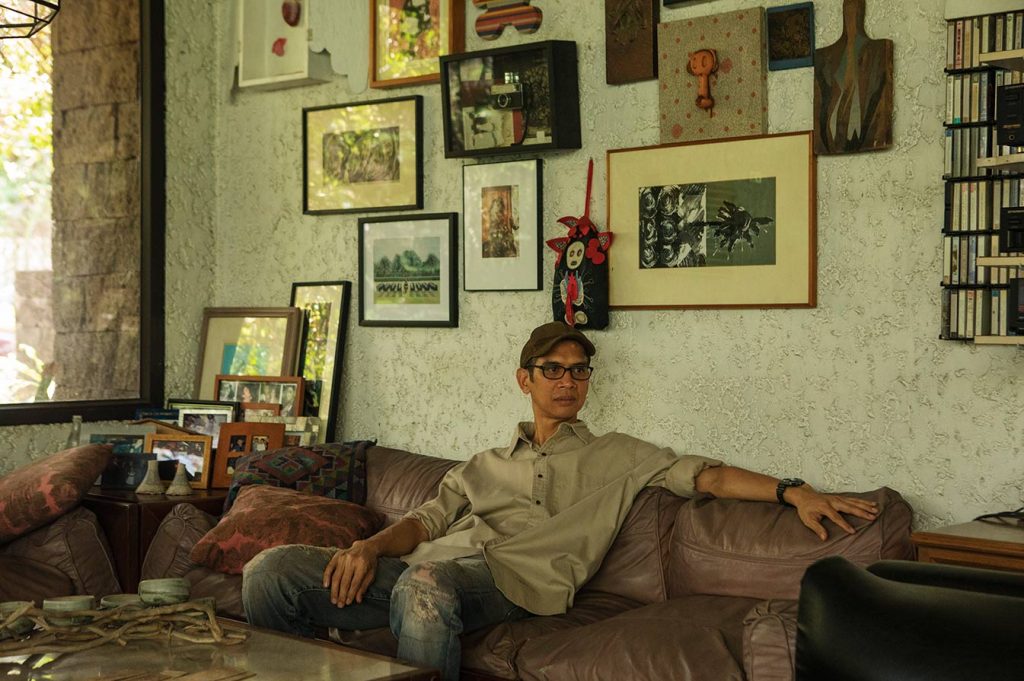
“One of my students asked, why does art always have to be negative?” he says. Currently on sabbatical, Eric has been teaching art class to high school students at Beacon Academy. His 2017 exhibit at Silverlens, titled “Almost Not,” consisted of military stretchers wrapped in black leather jackets, a stark statement on the war the government has been waging. Perhaps taking his student’s comment into consideration, he added counterweights to the visually heavy objects by embedding signs of life, like a breast pump that would activate every 15 minutes, or a rotating rod topped with the wing of a spinning seed.
“Cosmic Grounds,” Eric’s latest show with Silverlens that opened on Jan. 18, veers back towards the personal, at least as its starting point. Mid-life has brought with it some sobering health issues for him and his wife. Eric altered his diet and started going on long walks around the tree-lined village. On these peripatetic journeys, he would encounter lost objects, discarded furniture, abandoned things lying around empty lots or by the road. “I wasn’t looking for them,” he says. “It wasn’t like going to a junk shop and searching for something in particular. These health scares were circumstances I had no control over, just like finding these objects.”
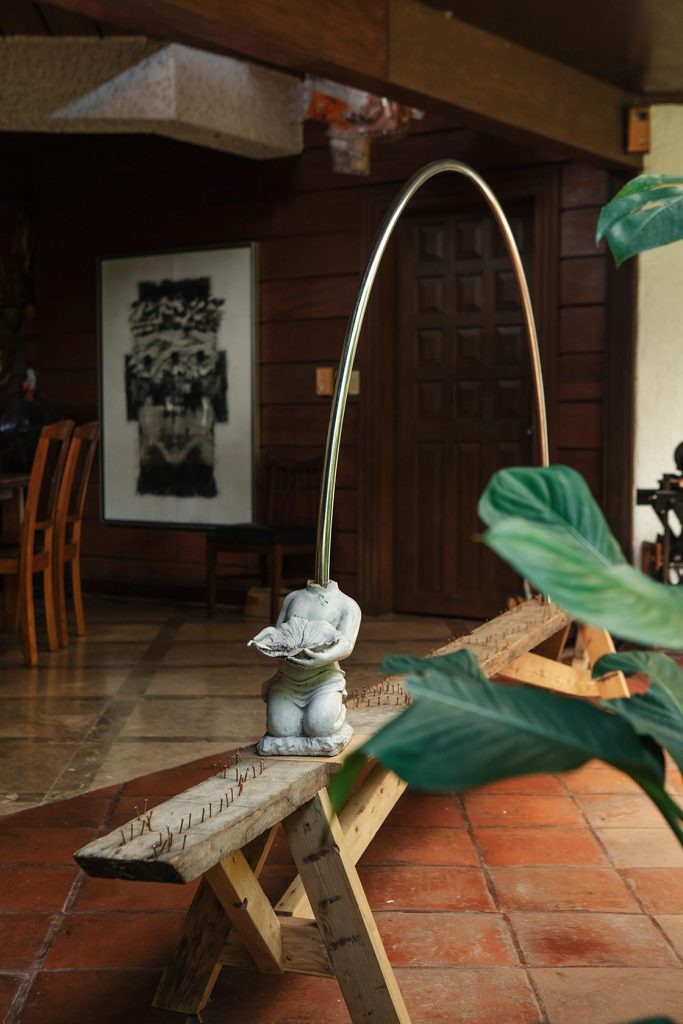
The deteriorating decorative pillar used as the main image of the exhibit has always been part of the house. “You have stuff and you look at it every day without seeing its potential.” Eric photographed the pillar and layered the image on sheets of glass, preserving it, renewing it. He found a headless heron sculpture, the kind you might find in someone’s manicured garden, and attached a new appendage that could be a head, could be a third wing. He briefly considers what his neighbors would think when they find out he’s been Frankensteining their lawn ornaments.
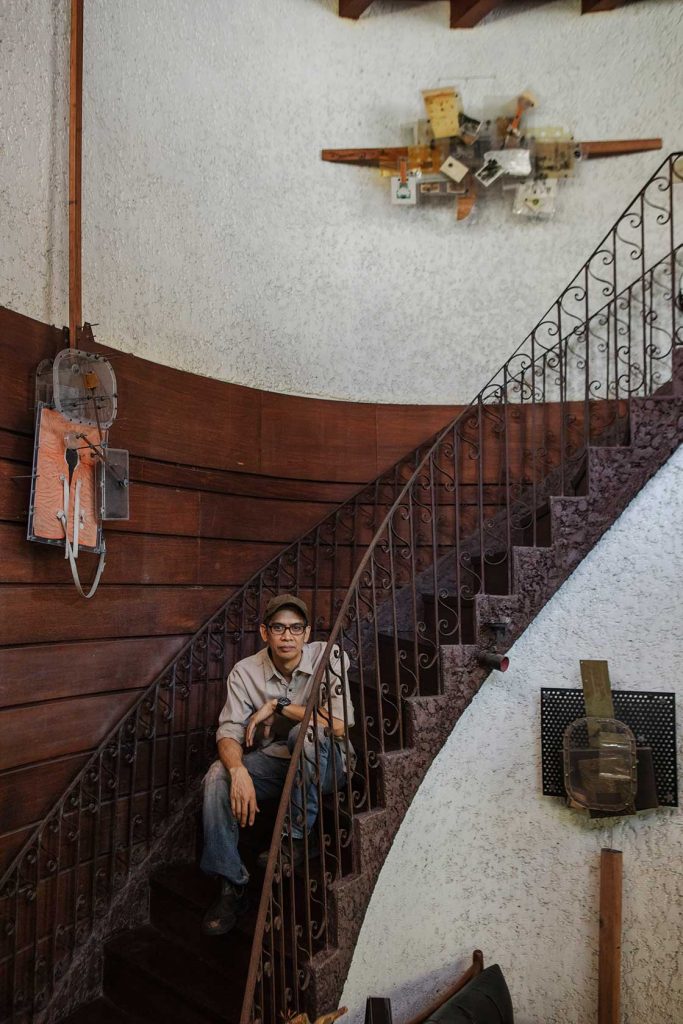
“You have stuff and you look at it every day without seeing its potential… You want to try to fix these objects, reclaim them, put order to them.”
“You want to try to fix these objects, reclaim them, put order to them.” What he sought to remake on the ground becomes a cosmic reckoning with the brokenness of our bodies but also with the possibilities of renewal and redemption. Other pieces in the exhibit expand the idea beyond the personal and into the wider notion of reclaiming territories and the settling of disputed boundaries. His youngest son scampers around these pieces, exposed rusty nails and all. The five-year-old has reterritorialized his dad’s work as playground equipment—to a kid, everything is fair game. When Eric says he is busy working, his son thinks his dad is just “sitting there”—the travails of being a cerebral artist father. Eric’s tinkering skills come in most handy when a toy loses a part. “The boys break stuff, and in the morning, I have a new thing on my desk to fix.”
This story originally appeared on the Southern Living Fixed Forward Issue.
Get more stories like this by subscribing to our weekly newsletter here.
Read more:
What’s designer Patis Tesoro doing in Laguna? Gardening and refurbishing old Filipino houses
The material and immaterial space of the Aquilizans’ Fruit Juice Factory
Why this artist covered Santo Niño in black acrylic paint
Writer: AUDREY CARPIO
PHOTOGRAPHY JOSEPH PASCUAL


